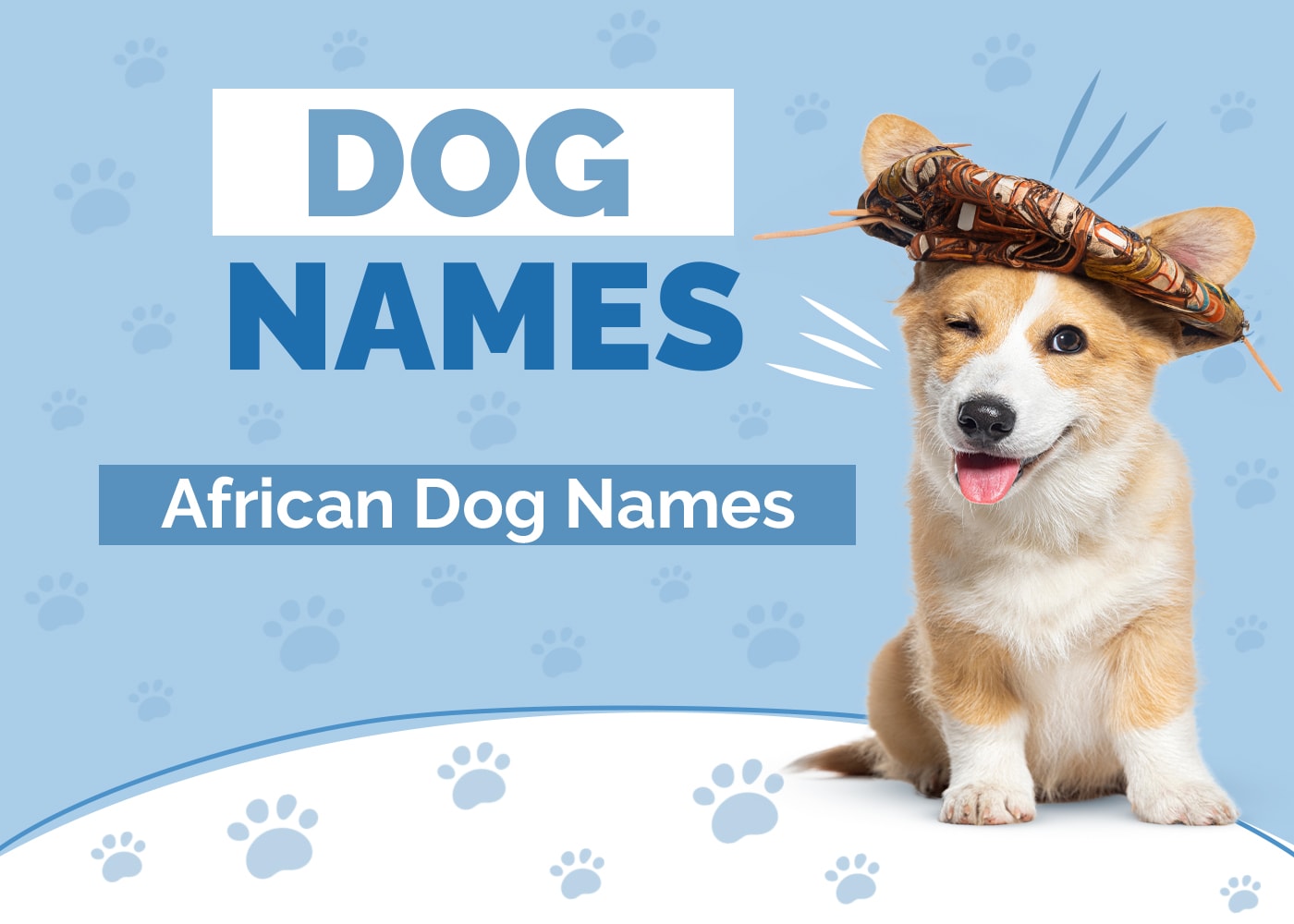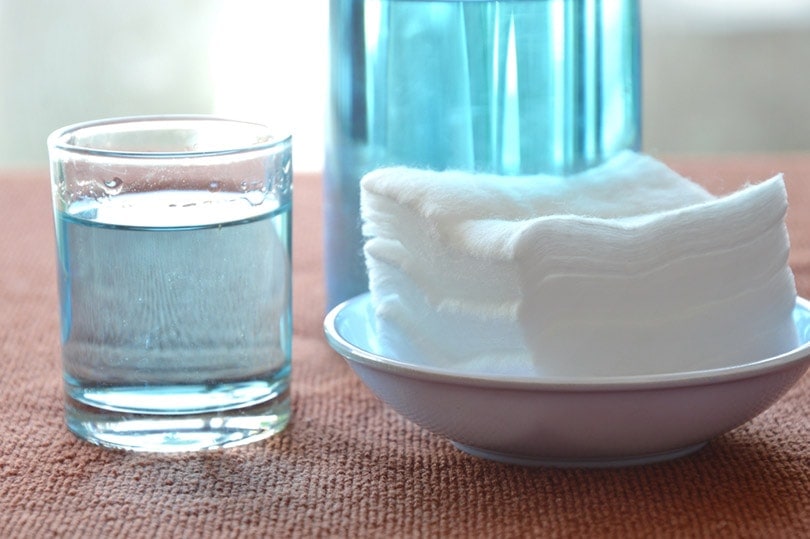White Miniature Schnauzer – Facts, Origin & History (With Pictures)
By Beth Crane
Updated on
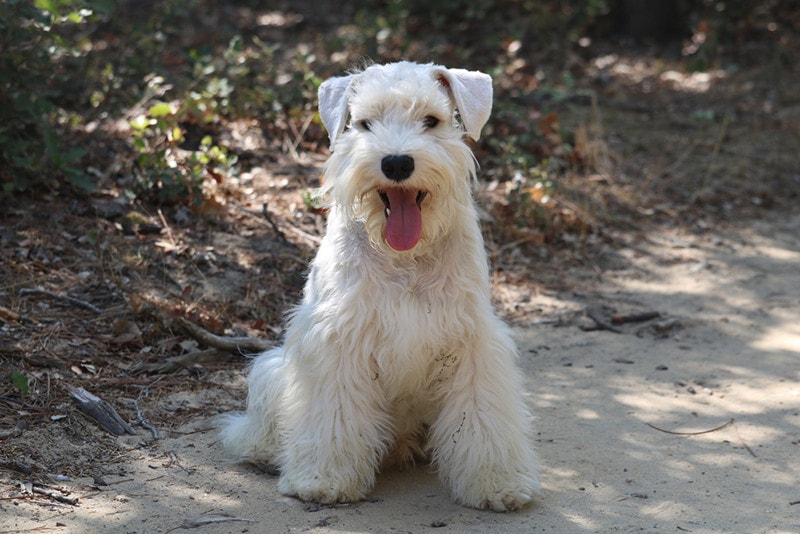
White Miniature Schnauzers are controversial in the dog world. The Miniature Schnauzer is a very popular breed, so the non-recognition of the white variety in all but one club is surprising. What makes the white Miniature Schnauzer so different from the other colors? Is it a rare color? Read on to see exactly how this enchanting dog came to be.
The Earliest Records of White Miniature Schnauzers in History
Miniature Schnauzers were first referenced in 1888 and were thought to be the product of standard Schnauzers being bred with smaller dogs of the same breed and Affenpinchers. Miniature Schnauzers were originally bred as multi-use dogs; farmers would use them as ratters, herders, and good guard dogs. They were bred down in size to make them more efficient ratters, allowing them into tighter spaces.
The first recorded mention of a Miniature Schnauzer in the US was of a black Miniature Schnauzer named Findel in 1924, which was introduced from Germany. Four dogs were imported into the US that year, with 108 Miniature Schnauzers imported between 1926 and 1936. Many believe these dogs are the distant relations of all Miniature Schnauzers currently in the US.
White Miniature Schnauzers have not had any exact dates placed on their origin, but early records of Miniature Schnauzers in Germany detailed that some of the dogs who founded the breed were white. This put the potential first mention of the white Miniature Schnauzer at around 1888.
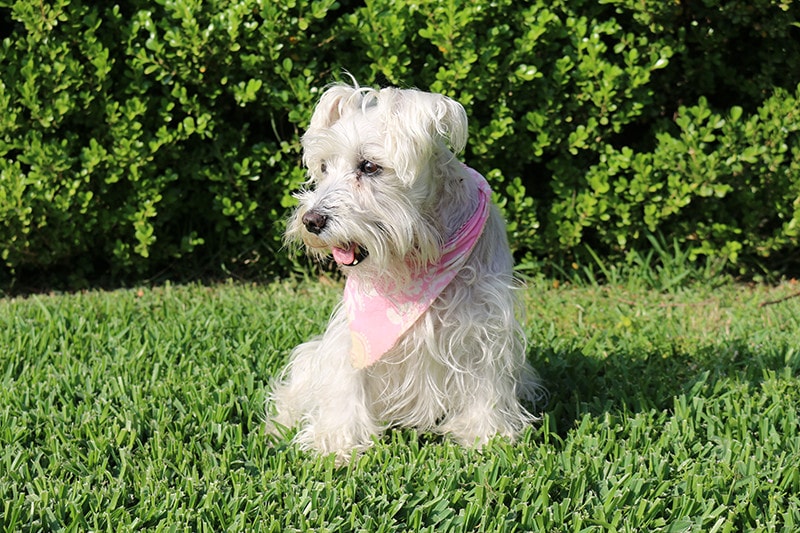
How White Miniature Schnauzers Gained Popularity
In 1934, after the breed’s acceptance into the American Kennel Club (AKC), a prominent kennel in Massachusetts owned by Marie Lewis was featured in a local newspaper. This sparked public interest and increased imports and acquisitions of the relatively unknown breed. However, the advent of World War II forced breeders to use dogs already in the US and put a stop to imported German Miniature Schnauzers.
White Miniature Schnauzers joined the breed’s meteoric rise in the years after the war, following the stellar performance of one specific dog during a Westminster dog show named Dorem Display. Dorem won best of breed in the Westminster Show in 1948 and 1949, showcasing the breed and increasing its popularity.
Following this, Miniature Schnauzers ranked as the 8th most popular breed with the AKC in 1966 and 7th in 1967. They were the most popular Terrier in the AKC for three years prior, and between 1956 and 1969, Miniature Schnauzers rose from the 24th most popular breed to the 5th.
White Miniature Schnauzers, unfortunately, fell out of popularity in Northern America due to controversy surrounding their color. White Miniature Schnauzers are accepted by the Federation Cynologique Internationale (FCI) as one of four colors. However, they’re not accepted by the AKC and the Canadian Kennel Club. That is because giant and standard Schnauzers aren’t allowed in any capacity to be white. This raised questions about whether white coloring was a part of the original breed or introduced from outside sources.
Formal Recognition of White Miniature Schnauzers
Miniature Schnauzers, as a breed separate from Standard Schnauzers, were first recognized by the AKC in 1926 and were differentiated and recognized by the FCI in 1955. The AKC recognized the white Miniature Schnauzer for performance events and registered the individual in 1926 but did not recognize them for conformation showing.
White Miniature Schnauzers were fully accepted only by the FCI in 1955, along with the breed at large. As a result, only Miniature Schnauzers that are a pure white color with a white undercoat may be accepted.
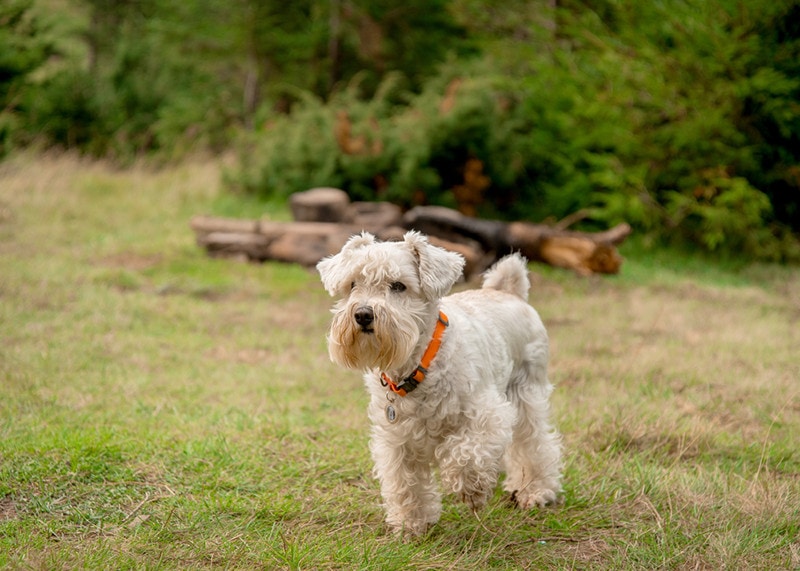
Top 4 Unique Facts About White Miniature Schnauzers
1. White Is One of Four Colors Miniature Schnauzers Can Come in
There are four colors of Minature Schnauzer that the FCI recognizes for all events:
- Salt and pepper (black and grey)
- Pure black with a black undercoat
- Black and silver (recognized in 2021)
- Pure white with a white undercoat
2. There Are Four Types of White Miniature Schnauzers
Despite white being a pretty simple color, there are four white hues. These differences are both in the coat color itself (such as with false white) and with the “base” color that shows on areas such as the nose, lips, and paw pads:
- No color white: White fur with a pink nose and paw pads that then change to either brown or black as the dog ages
- True white: White fur with a black nose, lips, and paw pads
- White chocolate/ brown nose white: White fur with a brown base (nose leather, lips, and paw pads)
- False white: Dogs born with a light tan coat that lightens into white as the dog ages.
3. White Miniature Schnauzers Are Rare
White fur needs a specific recessive gene to express for a puppy to inherit it: the e/e gene. This double recessive gene is much less likely to express naturally in puppies as both parents need to carry it. This, and the fact that the color fell out of favor with the AKC, meant that white Miniature Schnauzers are a rarity in the breed and are often priced as such.
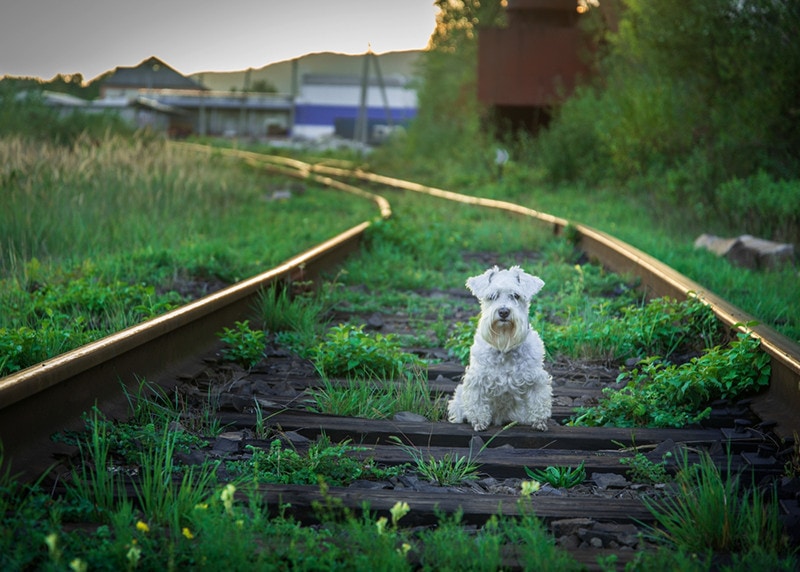
4. Only Miniature Schnauzers Can Be White
Out of the three sizes of Schnauzer (Miniature, Standard, and Giant), only Miniature Schnauzers can be allowed in any clubs with white fur. In addition, the Standard Schnauzer and Giant Schnauzer are only allowed in the following colors: salt and pepper, black and silver, and black.
 Does a White Miniature Schnauzer Make a Good Pet?
Does a White Miniature Schnauzer Make a Good Pet?
White Miniature Schnauzers make wonderful pets for people from all walks of life. They are loyal, intelligent dogs that are gentle with children and relaxed around people but vigilant and protective of their families. They make good guard dogs but are likelier to bark rather than bite.
White Miniature Schnauzers are intelligent dogs that need stimulation to keep them happy; they’re not dogs that like to lounge. They also need regular grooming, as they have wiry hair that grows long and gets tangled, particularly around the eyes. White Miniature Schnauzers also frequently suffer from tear staining, and they’ll need suncream in summer to prevent skin cancer, but on the whole, they’re enchanting dogs that bring joy to the whole family.
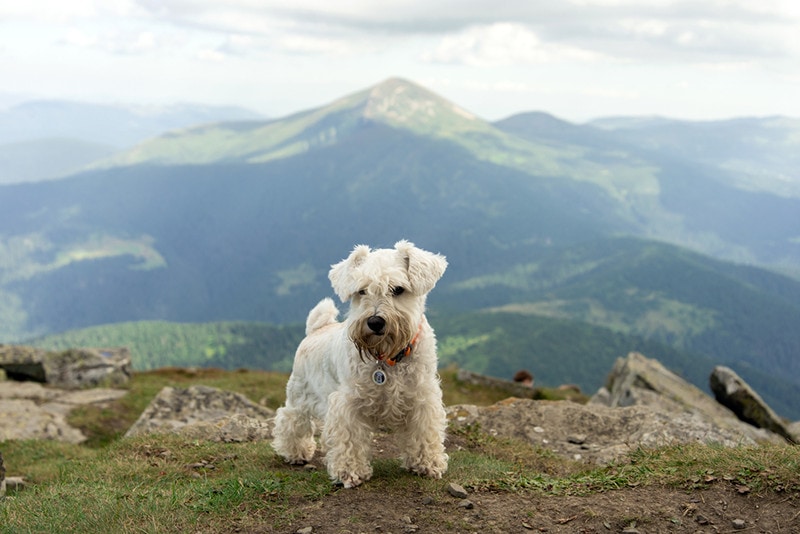
Conclusion
White Miniature Schnauzers are loving dogs with a history of controversy. Some clubs allow them full recognition into the breed standard, while others disqualify them for conformation due to their white fur. This is because there are questions about its heritage, but the beautiful and loyal dog is unique and will be a talking point among lovers of Miniature Schnauzers for years to come.
Featured Image Credit: Valerie Lesage, Shutterstock

